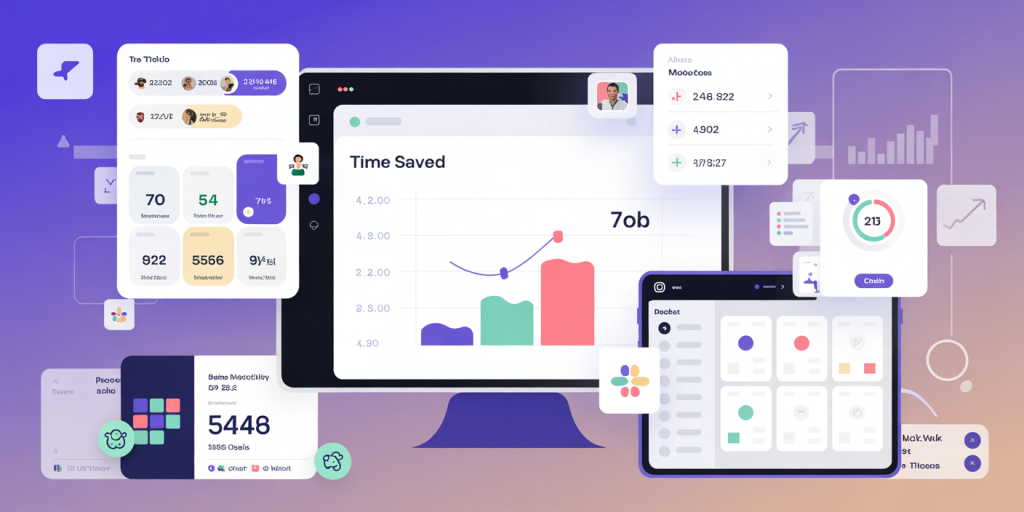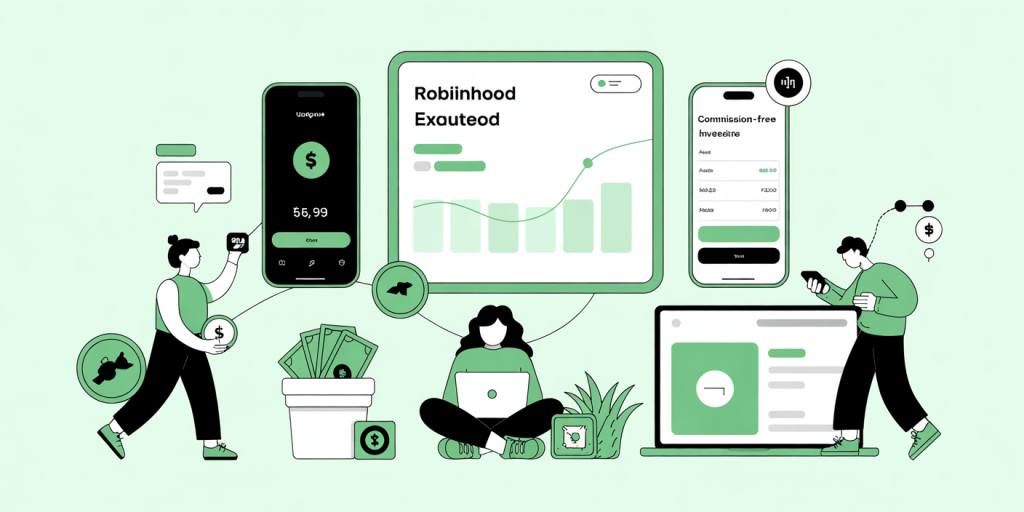Online Tools That Help You Save Time, Money, and Energy
In today’s fast-paced digital age, efficiency has become a critical factor for success both at work and in daily life. With a vast ecosystem of online tools developed to streamline tasks, individuals and businesses can optimize their resources more effectively than ever before. Saving time, money, and energy isn’t just about cutting costs—it’s about smartly utilizing technology to maximize productivity, minimize effort, and ensure sustainability.
As the global workforce increasingly shifts to remote and hybrid models, the demand for online productivity tools has surged. These solutions range from project management software to financial automation tools, each designed to reduce manual workloads and enhance outcomes. According to a McKinsey report (2022), digital tools can increase productivity by 20-30%, proving their substantial value across industries. Understanding which tools to leverage and how they impact different aspects of life can empower users to take control of their efficiency strategies.
Time-Saving Online Tools for Enhanced Productivity
Effective time management is essential for balancing professional and personal commitments. Online tools that automate repetitive tasks, organize workflows, and facilitate collaboration are invaluable assets for saving precious hours each day.
One notable example is Trello, a project management platform that uses boards, lists, and cards to visually organize tasks. Teams can assign responsibilities, set deadlines, and track progress in real-time, reducing the need for lengthy meetings and email exchanges. For instance, a remote marketing team reduced project turnaround time by 25% after adopting Trello, according to a case study by Atlassian (2021).
Another powerful tool is Zapier, which automates workflows by connecting multiple apps without requiring coding skills. For example, sales teams can automate lead capture by syncing entries from web forms to CRM systems and triggering follow-up emails automatically. This type of automation saves an average of 3-5 hours per week per employee, as reported in a Zapier user survey (2023).
Efficient communication platforms like Slack also play a significant role. Slack’s integration with numerous services consolidates notifications and reduces distractions from switching between apps. Teams using Slack report a 32% increase in internal communication speed versus traditional email, according to a 2020 study by Forrester Research.
Comparative Table: Top Time-Saving Tools
| Tool | Primary Function | Key Features | Time Saved (weekly) | Ideal For |
|---|---|---|---|---|
| Trello | Task and project management | Visual boards, real-time updates | 4-6 hours | Teams, freelancers |
| Zapier | Workflow automation | App integrations, triggers and actions | 3-5 hours | Sales, marketing, operations |
| Slack | Communication | Channel messaging, app integrations | 2-4 hours | Remote and hybrid teams |
By integrating these tools into daily routines, users can automate mundane tasks, prioritize important work, and communicate effectively, ultimately freeing up time for strategic activities.

Money-Saving Tools: Optimizing Financial Management
Efficient financial management is a cornerstone of saving money, and numerous online tools empower users to take control of their budgets, investments, and expenses with precision and ease.

Mint is an online budgeting tool that aggregates all bank accounts, credit cards, and bills in one place. It offers real-time expense tracking, budget goal setting, and personalized financial advice. Users report an average savings increase of 10-15% annually by identifying unnecessary expenditures and avoiding overdrafts, as per Mint’s internal analytics (2022). For example, a freelance graphic designer used Mint to monitor project expenses and reduced overhead costs by $200 monthly.
For small businesses, accounting software like QuickBooks Online streamlines bookkeeping and tax preparation. It automates invoice generation, expense categorization, and financial reports, reducing accounting errors and costly audits. QuickBooks users have reported a 20% decrease in accounting-related expenses and time spent on tax filing, according to Intuit’s user survey (2023).
Investment platforms such as Robinhood have democratized stock trading by eliminating commission fees, making investing accessible and affordable for beginners. Data from the Securities Industry and Financial Markets Association (2023) indicates that commission-free trading has helped new investors save an estimated $700 million collectively in fees over the past year.
Comparative Table: Popular Money-Saving Tools
| Tool | Function | Free/Paid Options | Key Benefit | User Example |
|---|---|---|---|---|
| Mint | Personal budgeting | Free | Expense monitoring, alerts | Freelancer reducing monthly costs |
| QuickBooks | Business accounting | Paid (subscription) | Automation, tax savings | Small business cutting fees |
| Robinhood | Investment platform | Free | No commission fees | New investors saving fees |
By adopting these financial tools, users gain clearer insights into their economic habits, avoid penalties, and optimize their spending and investment strategies.
Energy-Efficient Tools: Reduce Effort and Environmental Impact
Energy conservation isn’t limited to physical utilities; it extends to digital efficiency by minimizing the cognitive and labor-intensive energy spent on tasks. Online tools that simplify processes help users maintain focus and reduce burnout, which indirectly conserves personal energy.
RescueTime is a time-tracking tool that monitors app and website usage to reveal productivity patterns. Through detailed reports and goal setting, users can identify energy drains and adjust habits accordingly. A 2022 study by RescueTime found that users who set focus goals increased productive work hours by 15% and decreased burnout symptoms significantly.
Smart home management apps like Google Home and Amazon Alexa enable remote control of lighting, heating, and appliances, helping households reduce physical effort and energy waste. According to a 2021 Consumer Reports analysis, smart thermostats combined with app control can lower energy bills by 10-12% annually by optimizing usage patterns.

Productivity apps like Forest gamify focus sessions with virtual tree planting, encouraging users to avoid phone distractions. This behavioral approach replenishes mental energy and improves sustained attention, essential for creativity-intensive tasks. Over 40 million downloads attest to Forest’s popularity among students and professionals alike.
Comparative Table: Energy-Efficient Tools Overview
| Tool | Primary Purpose | Energy Saved | Specific Feature | Use Case |
|---|---|---|---|---|
| RescueTime | Digital productivity | Cognitive energy | Usage insights, focus goals | Remote workers avoiding burnout |
| Google Home | Smart home management | Physical energy | Device control, automation | Households reducing energy waste |
| Forest | Focus enhancement | Mental energy | Gamification, distraction blocking | Students improving study routine |
These technologies reduce mental and physical effort by promoting optimized workflows and sustainable habits.
Online Collaboration and Learning Tools: Streamlining Teamwork and Growth
The emergence of remote work has pushed the development of platforms that facilitate online collaboration and continuous learning without geographical barriers. These tools save time, money, and energy by replacing costly travel and enabling asynchronous productivity.
Microsoft Teams combines chat, video meetings, file sharing, and app integrations in a single unified platform. It reduces reliance on physical meetings and email threads, accelerating project completion. For example, a multinational IT company reported a 30% cut in travel expenses after adopting Teams for in-house and client communications (Microsoft annual report, 2023).
Online learning platforms like Coursera offer certified courses from reputable universities, providing affordable and flexible skill acquisition. Data from Coursera (2022) shows that learners who complete courses improve job prospects and salary by an average of 16%, which suggests money saved on traditional education and increased earning potential.
Collaborative document editors such as Google Workspace enable multiple users to edit and comment in real-time, eliminating version conflicts and the energy spent on manual consolidation. Nonprofits and startups particularly benefit from this cost-effective, cloud-based collaboration environment.
Comparative Table: Collaboration and Learning Tools
| Tool | Function | Cost Structure | Value Proposition | Best Suited For |
|---|---|---|---|---|
| Microsoft Teams | Communication & Meetings | Paid with free trials | Integrated collaboration | Large enterprises, agencies |
| Coursera | Online courses | Free and paid options | Accessible skill development | Professionals, lifelong learners |
| Google Workspace | Document collaboration | Subscription | Real-time co-editing and sharing | Startups, nonprofits |
Through efficient virtual collaboration and education, these tools save users significant resources that can be redeployed to core activities.
Future Perspectives: Evolving Online Tools for Greater Efficiency
As artificial intelligence (AI) and machine learning (ML) continue to advance, future online tools will offer even more personalized automation and decision-making support. Predictive analytics and intelligent assistants promise to further reduce the cognitive load and manual input required from users.
For example, AI-powered email clients like Superhuman already use smart sorting and response suggestions to cut email handling time by up to 50%, according to the company’s own data (2023). Expect such tools to integrate more deeply into daily workflows, anticipating user needs based on behavioral patterns.
Sustainability-driven software that tracks ecological footprints and recommends energy-saving actions will also become more prevalent. Digital twin technologies—in which virtual replicas of physical systems are used—will help businesses optimize resource consumption in real time. IBM’s ongoing research indicates that employing digital twins can improve operational efficiency by up to 30% by 2030.
Additionally, as 5G and edge computing become widespread, online tools will offer faster, more reliable experiences, reducing lag and improving user engagement across devices. This infrastructure enhancement will support increasingly complex, AI-driven automation tools that can deliver multitasking capabilities with minimal energy consumption.
The convergence of these technologies signals an era where online tools not only save time, money, and energy but also actively contribute to smarter, sustainable living and working environments.
—
In conclusion, the strategic use of online tools tailored for productivity, financial management, energy conservation, and collaboration brings measurable benefits. Businesses and individuals who adopt such technologies enjoy improved efficiency, substantial cost savings, and reduced fatigue. Moreover, ongoing technological innovations promise to deepen these advantages, making digital tools integral to the future of efficient living and working. Harnessing the right tools today lays a solid foundation for thriving in a competitive and resource-conscious world.
